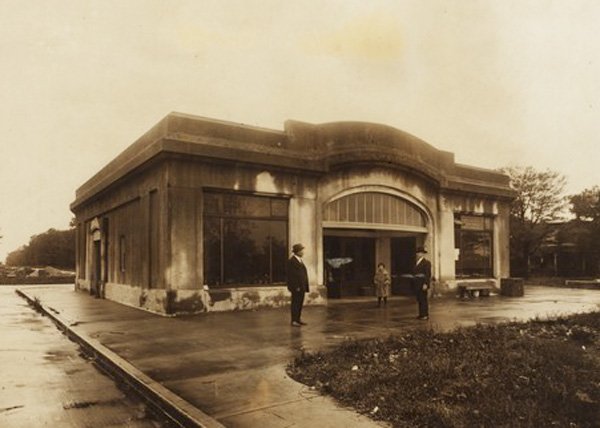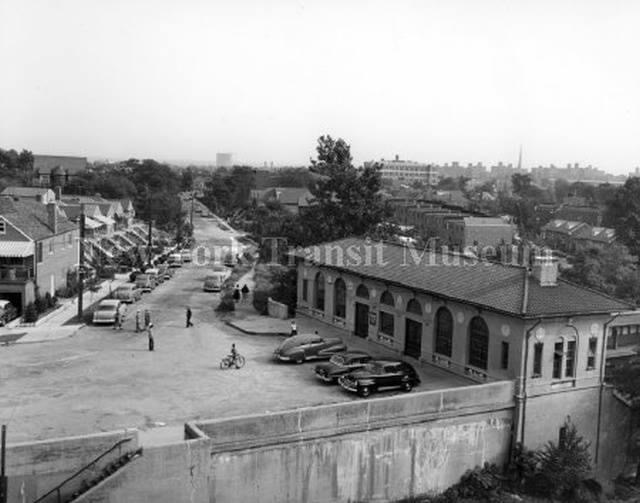East Bronx Ramble
WHERE: Stair streets on Tillotson Avenue and Paulding Avenue, Bronx
START: Baychester Avenue subway station (5 train)
FINISH: Patricia’s of Morris Park Restaurant, then Bx21 bus to East 180 Street subway station (2 and 5 trains, fully accessible)
DISTANCE: 3.5 miles (5.6 kilometers)
Photographs by Made in Brooklyn Tours except as noted. Maps courtesy of Google Maps.
Map of this walk.
Profile of this walk.
The East Bronx is defined roughly as the large area east of the Bronx River. While it is hilly, the hills are not as pronounced as those west of the Bronx River. I have located only three stair streets in the whole of the East Bronx, and two of these could be linked with a hilly walk roughly paralleling the number 5 subway line. The area through which we walked is comprised mostly of one- and two-family homes owned by people who are not wealthy. The population is quite diverse ethnically. I was joined on this walk by my friends Dan Murphy and Dom Gervasi, and Ken, a follower of Turnstile Tours who watched their interview with me on November 29, 2021.
The subway line we paralleled is the remnant of the New York, Westchester and Boston Railway, a splendidly built, state-of-the-art commuter railroad that began operation in 1912. The NYW&B was built as straight and as level as possible, resulting in the line being built on many viaducts and in open cuts to account for the hilly topography of the East Bronx. Many of its station buildings were quite handsome. It utilized the tracks of its parent, the New York, New Haven and Hartford, from the far south Bronx to the West Farms area, where its own 4-track main line diverged and continued to Mount Vernon. From there, one branch continued to White Plains and another first to New Rochelle and later to Port Chester. While the NYW&B connected with the Manhattan elevated railway (Second and Third Avenue lines) at its southern terminus, and with the IRT subway at East 180 Street, its trains did not run through to Grand Central Terminal as the New Haven’s did. Passengers preferred going directly to midtown Manhattan on the New Haven or the New York Central to paying a lower fare on the “Westchester” and having to make a connection in the Bronx. This, the fact that the areas traversed by the railroad never got beyond low-density development, and corporate mismanagement, sealed the fate of the NYW&B and it ceased operations on the last day of 1937. In 1940 the City of New York acquired the portion of the NYW&B from West Farms Junction to the city line for a mere $1.7 million, then fitted it with third rail (to power the trains), spare subway signals, and surplus Manhattan elevated cars, and inaugurated service in 1941. In time the line was given a direct connection with the subway at East 180 Street, and the stations at East 180 Street and Gun Hill Road were made fully accessible.
Source: New-York Historical Society Digital Collections.
Most of the houses in this area appear to have been built after World War II, as is suggested by the accompanying photo, taken from Boston Road looking toward Baychester Avenue and the NYW&B, on June 16, 1938. There were some delightful exceptions.
At the start of the walk, the Baychester Avenue station, the platforms are 48 steps above the street. A few blocks from the start are the Tillotson Avenue steps, 26 steps intertwined with a ramp in a double helix pattern, making this visually appealing passage fully accessible except at the very top, where there is not a continuous sidewalk.
A few blocks on, the corner of Mickle Avenue and Givan Avenue is co-named J. W. Smith Way. Curious as to who J. W. Smith is or was, I found this at www.nycstreets.info:
“J.W. Smith Way (Bronx)
Present name:None
Location: Southeast corner of Mickle Avenue and Givan Avenue
Honoree: John Smith (1948-2017) joined Grace Baptist Church in 1995, and served in many positions of responsibility. In March 2005 he was ordained into the Grace Deacons’ Ministry and served multiple terms as President of the Men’s Ministry. He was a charter member of the Men’s Choir and the Peace Keepers; a member of the Laymen’s Unified Missionary Baptist Association; as well as an active member of the Usher’s Ministry, the Veteran’s Ministry, and President of the Transportation Ministry. In this position, he coordinated transportation for disabled and elderly members, and served as a driver and youth advisor during the Youth’s Midnight Run, driver for the Annual Sunday School Retreat, as well as the Empire Baptist Missionary Convention. For several years, he recruited members for the Annual Toy Drive, and was Spiritual Advisor for the Station of Hope (Prison) Ministry. He served on the boards of the Ujamaa Community Development Corporation; two foundations; and the Community Emergency Response Team (CERT), a group of volunteers trained in disaster preparedness and emergency response. He was also active in the 47th Precinct Community Council.”
Dan and I at the Tillotson Avenue stairs. Makeshift shrine at the top of the stairs; a lot of candles, a lot of bottles, and no clue as to how this young man died. J. W. Smith Way (photo by MC). Dan, Ken and I on Tillotson Avenue. Dom and I outside a nice house on Mickle Avenue. New-time religion on Burke Avenue (photo by MC). All I can say about the last image is, So It Is Written.
After a few blocks we crossed busy Gun Hill Road onto Sexton Place and started closely paralleling the number 5 line as far as Pelham Parkway. At Mace Avenue the line goes into a tunnel atop which is a broad, pleasant avenue called the Esplanade. The Esplanade is interrupted by Pelham Parkway as it continues to the Morris Park subway station. It was a short distance along the Esplanade that we encountered a friendly neighborhood character named Orlando. I suspect pedestrians are a rare sight in this part of the Bronx, much less four middle-aged and older white guys walking together.
Gate in front of a house on the Esplanade. A tree in front of which I had to be photographed. Orlando, Dan and I in front of Orlando’s house.
A few more blocks and we came upon the Pelham Parkway station of the NYW&B, now the number 5 subway line. In the middle of the Esplanade just north of Pelham Parkway, it is little changed from when it opened in 1912 and could do with some tender loving care.
The Pelham Parkway station in 1923 (courtesy New York Institute for Special Education) and 2021.
The Esplanade was created because the money-was-no-object backers of the NYW&B, among whom was J.P. Morgan, could create it, and to not conflict with the aesthetic of the Bronx and Pelham Parkway (nobody calls it anything but Pelham Parkway).
At Pelham Parkway we turned off the Esplanade for a few blocks to take in the second stair street of the day, at Paulding Avenue going up to the Morris Park subway station. In recent years a school group transformed the stairs from dull concrete to this vibrant scene, a true joy on our walk. The students were assisted by Pubicolor, a nonprofit youth development organization. The stairs themselves are in good condition and the handrails are at a comfortable height. Total: 43 steps up.
Two views of the Paulding Avenue steps, the first photo by MC, the third courtesy Urban Archive.
The Morris Park station is a handsome structure, one of the best on the NYW&B. It sits at the southern end of the Esplanade and completes the vista of the street. The terra cotta medallions on the facade include the NYW&B logo, a caduceus, shown in an image below.
The Morris Park station and Esplanade in 1913 (collection of Charles A. Warren), two views in 2021 (first photo by MC), and how the station looked in NYW&B days - notice overhead power for the trains (New York Public Library).
Left: Morris Park station, 1949, showing the difference in elevation between the Paulding Avenue stairs and the neighborhood to the south. Photo from the collection of Charles A. Warren. Right: NYW&B logo, courtesy nywbry.org.
From the Morris Park station it was an easy walk to a fine lunch at Patricia’s of Morris Park on Morris Park Avenue. This walk didn’t feature so many stairs, a total of 69, but it was good and hilly, and unexpectedly interesting, far off the tourist trail.
Colorful facade on Morris Park Avenue. Dom and I in front of the landmark East 180 Street subway station. This building was the busiest station and the general offices of the New York, Westchester and Boston Railway.

























